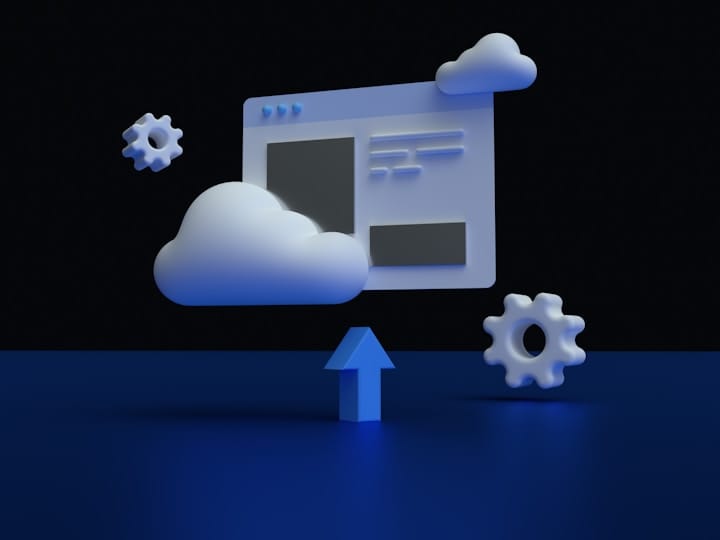Introduction
The remote work landscape has witnessed a remarkable transformation in recent years, catalyzed by advancements in technology, shifting employee expectations, and the global changes brought about by the COVID-19 pandemic. As more organizations embrace remote and hybrid work models, building an effective remote work toolkit becomes essential for fostering productivity, collaboration, and employee satisfaction. A well-curated toolkit not only streamlines workflows but also enhances communication, facilitates project management, and fosters a sense of belonging for team members, regardless of their geographical location.
In this blog post, we will delve into the critical components of a scalable remote work toolkit, exploring the tools and platforms that can support your team’s growth and adaptability. We will discuss the importance of assessing your team's needs, selecting appropriate technologies, and continuously evolving your toolkit as your team scales.
Skip Ahead
- Assessing Your Team’s Needs
- Essential Communication Tools
- Collaboration Platforms
- Project Management Solutions
- Time Management and Productivity Tools
- Cloud Storage and File Sharing
- Security and Compliance Considerations
- Training and Support Resources
- Measuring Efficiency and Performance
Assessing Your Team’s Needs
Before diving into the multitude of tools available, it's essential to conduct a thorough assessment of your remote team's current and future needs. Understanding your team dynamics, existing workflows, and pain points will inform your choices as you compile your remote work toolkit.
1. Identify Core Activities
Start by mapping out the core activities your team performs daily. This includes communication, project management, collaboration, and shared documentation. By identifying these activities, you can focus on tools that effectively support them.
2. Consider Team Size and Structure
As your team grows, the complexity of managing communication and collaboration increases. Analyze your current team structure and anticipate future growth to choose tools that scale without requiring significant changes.
3. Solicit Team Feedback
Engaging your team during the assessment process is critical; their input reflects their preferences and experiences with remote work. Surveys or informal discussions can help uncover which tools they find most effective and where they see room for improvement.
4. Embrace Flexibility
Acknowledge that different teams may have distinct requirements. For example, a design team may require robust visual collaboration tools, while a software development team may prioritize technical documentation and version control systems. Your toolkit should be adaptable to these nuances.
Essential Communication Tools
Effective communication is the backbone of any remote team. Establishing a clear channel for both synchronous and asynchronous communication promotes collaboration and minimizes misunderstandings. Below are key communication tools to consider:
1. Video Conferencing Solutions
Platforms like Zoom or Microsoft Teams are integral for team meetings, one-on-ones, and collaborative brainstorming sessions. Their features, such as screen sharing and breakout rooms, enhance engagement and productivity during virtual meetings.
2. Instant Messaging Platforms
Tools like Slack or Microsoft Teams enable real-time communication, ensuring quick responses and active discussions. Channel organization allows teams to segment conversations by project or topic, promoting clarity and focus.
3. Email Management
Though often seen as an outdated method of communication, email remains a cornerstone for formal communication. Utilizing platforms like Gmail with built-in synchronization features helps manage tasks and ensures important messages are never overlooked.

Collaboration Platforms
Collaboration in a remote environment requires tools that facilitate teamwork, brainstorming, and shared project development. Here are some pivotal platforms to consider:
1. Digital Whiteboards
Tools such as Miro and MURAL provide virtual canvases for brainstorming, mapping ideas, or conducting design sprints. These platforms replicate the in-person brainstorming experience, allowing team members to contribute ideas simultaneously, regardless of their locations.
2. Document Collaboration
Services like Google Workspace or Microsoft 365 allow teams to collaborate in real-time on documents, spreadsheets, and presentations. The instant editing feature encourages seamless content creation and fast feedback loops.
3. Creative Collaboration Tools
For teams involved in design or content creation, platforms like Adobe Creative Cloud and Canva facilitate collaboration on multimedia projects while retaining version control and file organization.
Related Blog: The Future of Remote Work: Adapting to a Hybrid Workforce
Project Management Solutions
Project management tools are paramount for ensuring that teams can plan, execute, and monitor their tasks efficiently. Consider implementing the following solutions:
1. Task Management Systems
Tools such as Trello or Asana help streamline task allocation and tracking. Customizable boards and lists allow teams to visualize project statuses and prioritize work effectively.
2. Agile Project Management
If your team utilizes Agile methodologies, options like Jira cater specifically to software development teams and feature Backlogs, Scrum Boards, and Kanban Boards. These functionalities optimize workflow processes and facilitate continuous delivery.
3. Team Collaboration Platforms
Integrate comprehensive platforms like Basecamp or ClickUp, which combine task management, document-sharing, and communication tools in one centralized location for improved collaboration across teams.

Time Management and Productivity Tools
Time management and productivity tools help teams stay focused and manage their workday effectively. Here are popular options to consider:
1. Time Tracking Software
Programs like Toggl or Harvest assist in tracking hours spent on tasks, providing insights into productivity levels and project allocations. These insights help teams understand time spent on various activities, informing future planning and resource allocation.
2. Pomodoro Technique Apps
Employing tools based on the Pomodoro Technique, such as Focus@Will or Forest, can aid in maintaining focus during work periods. These apps encourage breaks, enhancing overall productivity and preventing burnout.
3. Calendar Management
Enhanced calendar tools like Calendly or Google Calendar help streamline scheduling and prevent meeting conflicts. Shared calendars ensure that team members are aligned on important timelines and availability.
Cloud Storage and File Sharing
With remote teams often sharing documents and data, having a reliable cloud storage solution is vital. Here are popular options:
1. Cloud Storage Services
Options like Dropbox or Google Drive offer secure and centralized locations for storing and sharing files. These platforms facilitate easy collaboration on documents and provide access control features for sensitive information.
2. File Transfer Solutions
In scenarios involving large files or sensitive information, using dedicated file transfer services like WeTransfer ensures secure and efficient transfers without compromising data integrity.
3. Version Control
For technical teams, using tools like GitHub or GitLab enables version control for code development. These platforms support collaboration in coding projects by allowing team members to contribute without overwriting each other’s work.

Security and Compliance Considerations
Security is a top priority for remote teams, as they often work with sensitive client data or intellectual property. It’s critical to select tools that prioritize security and compliance. Consider the following aspects:
1. Secure Communication Channels
Using encrypted communication tools, such as Signal or Wire, ensures that your team’s discussions remain confidential and secure from unauthorized access.
2. Data Protection Policies
Ensure your chosen tools comply with necessary data protection regulations (e.g., GDPR, HIPAA) to safeguard personal data and customer information. Regular audits and compliance checks will help maintain standards.
3. Password Management
Utilizing password management tools like LastPass or 1Password enhances security by assisting team members in managing complex passwords and maintaining access across multiple platforms.
Related Blog: Navigating Cybersecurity Risks in a Digital World
Training and Support Resources
As your remote team grows, proactive training and support are essential for onboarding new members and keeping existing personnel up-to-date. Consider the following approaches:
1. Learning Management Systems (LMS)
Platforms like TalentLMS or Udemy for Business enable businesses to offer training resources and courses to team members, facilitating continuous development and skill enhancements.
2. Internal Knowledge Base
Creating an internal knowledge base using tools like Notion or Confluence allows team members to access vital information on projects, processes, and best practices.
3. Regular Training Sessions
Hosting regular training webinars or workshops allows teams to familiarize themselves with new tools and technologies. This promotes a culture of learning and adaptability.
Related Blog: How to Create a Brand That People Love and Trust
Measuring Efficiency and Performance
To assess the effectiveness of your remote work toolkit, implementing performance metrics is crucial. Below are actions to consider:
1. Regular Performance Reviews
Creating a structured performance review process helps evaluate individual and team productivity regularly. This fosters accountability and enables constructive feedback for continuous improvement.
2. Analyzing Usage Metrics
Using analytics from your tools—such as time spent on tasks or project completion rates—provides insights into team performance and tool utilization, informing adjustments as needed.
3. Employee Feedback
Continuously soliciting feedback from team members regarding their experiences with the toolkit aids in identifying areas for improvement or potential upgrades.
Conclusion
As remote work continues to shape the way organizations operate, building a scalable remote work toolkit is crucial for nurturing collaboration and productivity among team members. By assessing your team's needs, incorporating essential tools for communication, collaboration, project management, and security, and providing training and support resources, your remote work environment can thrive.
Fostering continuous improvement through feedback and performance evaluation ensures that your toolkit evolves along with your team, empowering them to perform at their best. In our rapidly changing work landscape, investing in a robust remote work toolkit is a strategic move that will cultivate resilience and enable sustainable growth for any organization.







